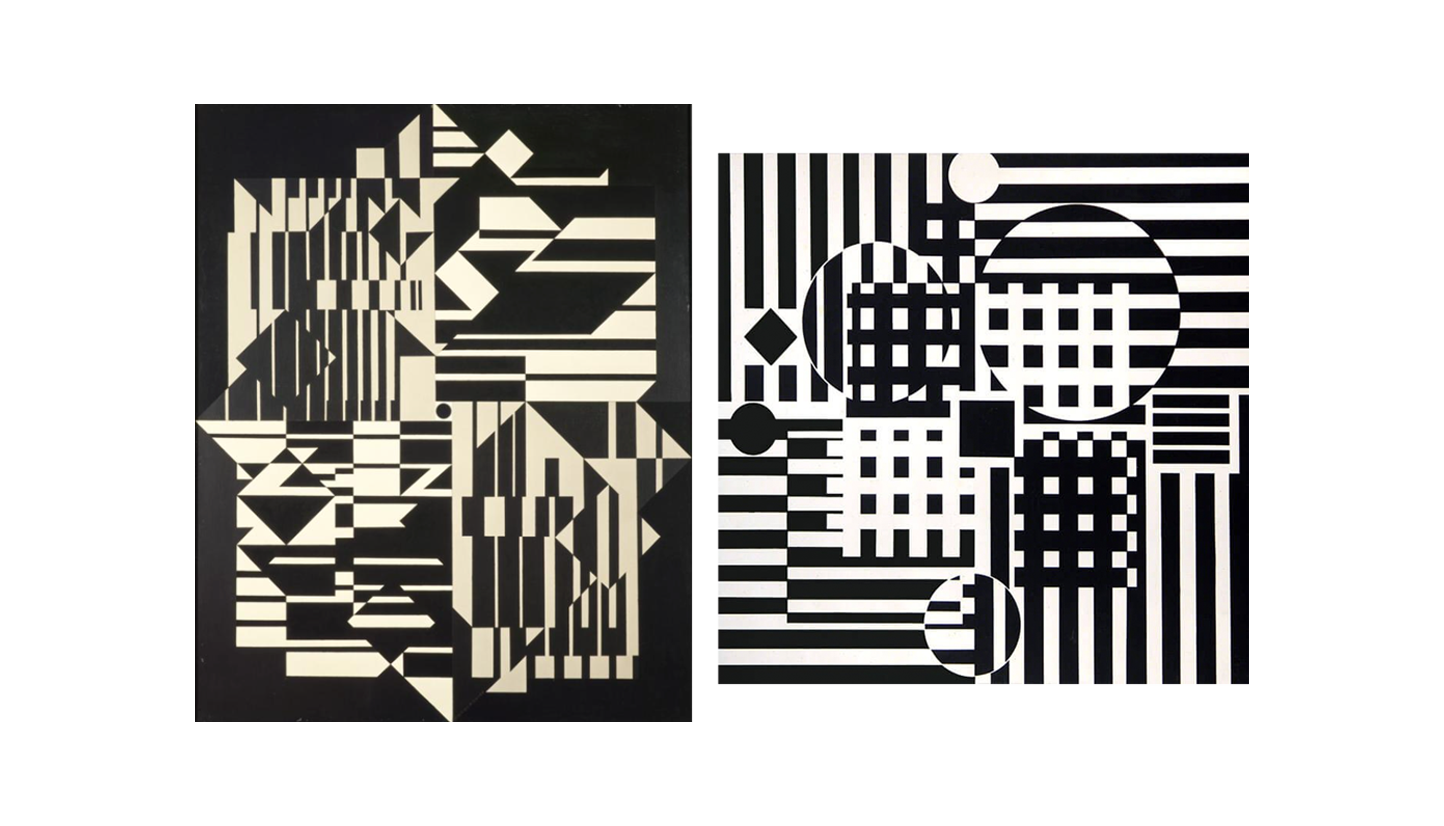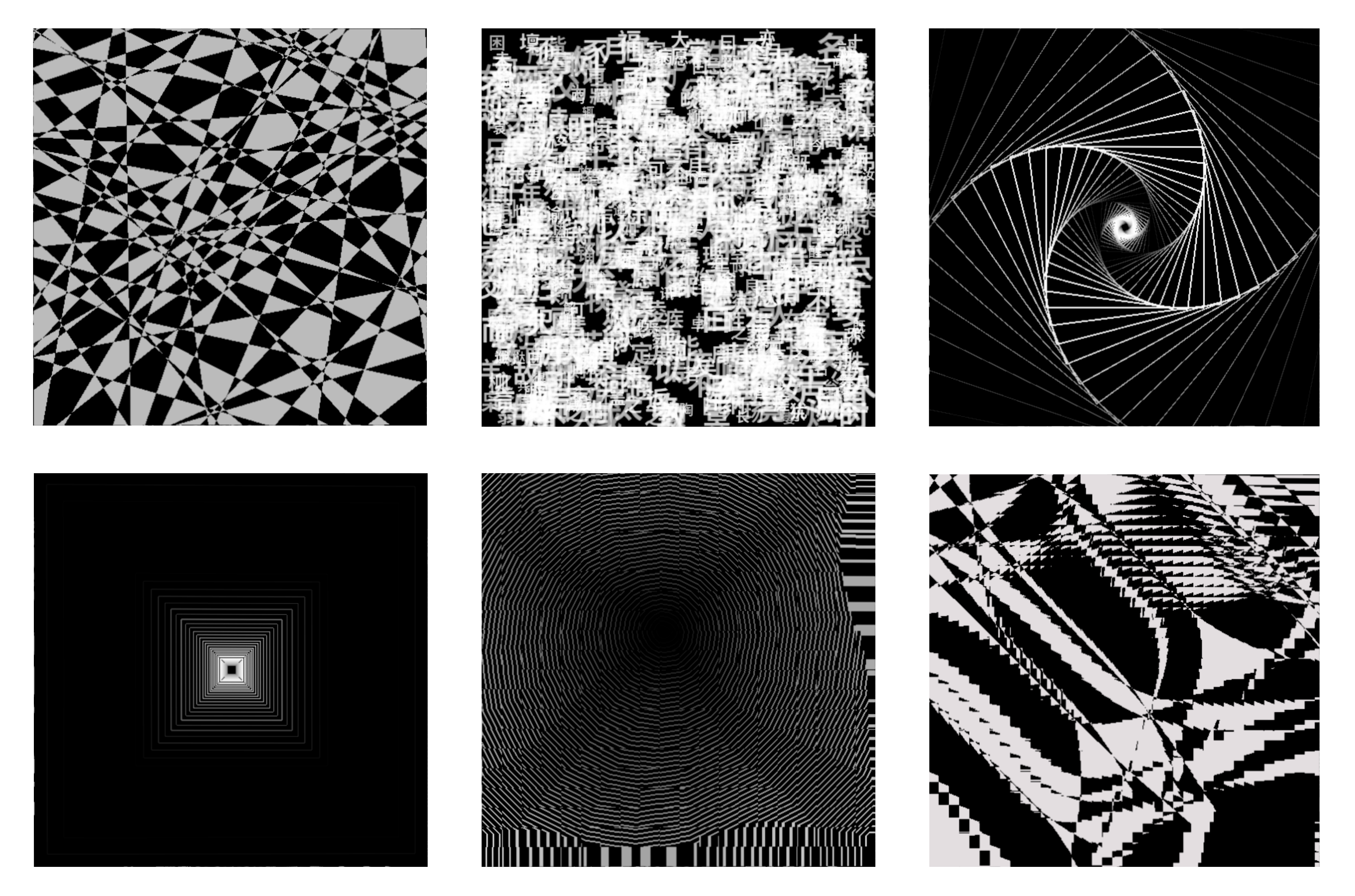Microsaccades
Microsaccades is a projection mapping project that explores the volatile figure-ground relationship using contrasting patterns and lines in abstraction. It creates a perceptual experience that investigates the nature of human visions. How do we perceive boundaries, truth, and illusions in the effect of dazzle?
produced by: Betty Li
Introduction
The project serves as a generator of perceptual responses. It plays with visual perspectives and boundaries in order to generate illusory effects. High-contrast patterns, line structures, typography in motion and fragmentation are designed for a multifocal visual system that tricks the human eye. According to visual neuroscience, eyes are always drawn to areas of contrast but lose their attention when overwhelmed by heavily patterned/ multifocal images. The project maximizes surface tension, seeking eye responses with microsaccades (small involuntary jerk-like eye movements that often occur during prolonged visual fixation).
Concept and background research
The project was mainly inspired by Op art, which used color theory and geometric principles to create illusions that beguiled and mesmerized the human eye. Artists experiment with color, tone, line, and form to create shapes that warped, shifted, and moved across the canvas. Furthermore, optical illusion is a hybrid study of visual manipulation, science, and philosophy. Neuroscientists claim that the illusion is initially present in the mechanism of contemplation of the surrounding space by the human eye. It is an empirical experience that hard-wired in our visual system. In other words, we are capable of seeing beyond reality, based on what our brains want us to see. On a philosophical note, the boundary is always owned by the figure — the relationship between ground and figure is ever-changing. Having these background knowledge in mind, I was intrigued to design an illusory projection mapping piece, and examine when the subconscious distortion of reality comes into play.
Bridget Riley, Flame (left), Blaze 1 (right)
Victor Vasarely, Taimyr (left), Encelade (right)
Technical
The project used C++ in Openframeworks with the addon ofXPiMapper. I used an additional fbo to store my objects in several scenes to better manipulate the warp movements of the object.
Main visuals designed in Microsaccades.
Future development
The project could be expanded to a much larger scale in the future. I only used one box to concentrate on how the visual perspectives transform but using multiple complex shapes to project on definitely will have a grander visual impact, and I am looking forward to experimenting on that.
Self evaluation
Overall I achieved the goal of creating a visually compelling, illusory projection mapping piece. I would say the control of rhythm and volume could be improved if you think of it as a song. There should be well-timed intervals in between the heavy graphics for the visual impact to take on full strike. And the graphics aren't necessarily "loud" enough / contrast enough for optical illusion effect. Putting both shapes of the object and the creative coding part into consideration for an illusory projection mapping is challenging, but I am satisfied with what I've made for this first experiment.
References
Code references:
Processing-Tutorial: Kinetic Typography 1 : https://www.youtube.com/watch?v=SKDhkB8g1So
Theo Lab Assignment: Moving Balls
My question on Openframeworks forum: https://forum.openframeworks.cc/t/fbo-oftexture-draw-subsections/36957
Research references:
The Neuroscience of Op Art: https://www.artsy.net/article/the-art-genome-project-the-neuroscience-of-op-art
Op art: https://www.britannica.com/art/Op-art
How the Op Art Movement Created Their Beguiling Illusions: https://fineartmultiple.com/blog/op-art-movement-artists-illusions/
Boundary: https://plato.stanford.edu/entries/boundary/#:~:text=1.1%20Owned%20vs.-,Unowned%20Boundaries,be%20continuous%20with%20each%20other.

































































